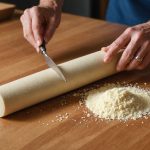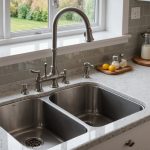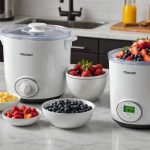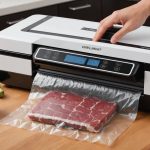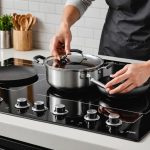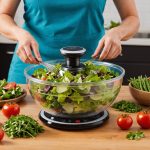Choosing the right kitchen scale can transform your cooking and baking experience. A scale that displays both metric and imperial measurements offers versatility, ensuring accuracy for any recipe. This guide will help you understand key features, benefits, and practical tips to select the perfect kitchen scale tailored to your needs. Say goodbye to guesswork and embrace the art of precise measurement in your culinary adventures!
Overview of Kitchen Scales
Kitchen scales are essential tools for precise cooking and baking, offering various features to meet diverse needs. There are different types of kitchen scales, each with unique benefits. Digital scales are popular due to their accuracy and ease of use, often featuring a digital display for clear readings. Mechanical scales, on the other hand, rely on a spring mechanism and are valued for their durability and lack of batteries.
Also read : Top Picks for the Best Stove Top Cleaners to Shine Your Glass Cooktop
An important feature to consider is the ability to switch between metric and imperial measurements. This versatility allows users to follow recipes from different regions without the hassle of conversion, ensuring accuracy and convenience in meal preparation.
Kitchen scales are commonly used for measuring ingredients to ensure consistency in recipes. They are also useful for portion control, helping users manage dietary needs more effectively. Whether you're a professional chef or a home cook, choosing the right kitchen scale can enhance your culinary experience.
Also read : Top Safety Innovations to Look for in Today’s Electric Pressure Cookers
Key Features to Consider
When selecting a kitchen scale, understanding its key features is crucial to ensuring it meets your cooking and baking needs. Precision is paramount; accurate measurements are essential for consistent results in recipes. Digital scales typically offer greater precision, providing exact readings that can make a significant difference in culinary outcomes.
Usability is another important consideration. The size of the scale should suit your kitchen space and storage capabilities. A clear, easy-to-read display enhances usability, allowing you to quickly and accurately read measurements. Additionally, consider how easy the scale is to clean, as this can impact your overall cooking experience.
There are several additional features that can enhance the functionality of a kitchen scale. The tare function, for instance, allows you to reset the scale to zero after placing a container on it, enabling you to measure only the weight of the ingredients. An auto-off feature can help conserve battery life by turning the scale off when not in use. Finally, consider the weight capacity of the scale to ensure it can handle the quantities you typically measure.
Comparison of Metric and Imperial Scales
Understanding the differences between metric and imperial scales is essential when choosing a kitchen scale. The metric system is based on units of ten, making it straightforward and consistent for precise measurements. In contrast, the imperial system uses pounds and ounces, which can be less intuitive but is preferred in some regions, particularly in the United States.
Measurement accuracy is a critical factor when considering these systems. Metric scales often offer higher precision due to their decimal-based structure, allowing for exact readings in grams or millilitres. This precision is particularly advantageous in baking, where accurate measurements can significantly affect the outcome. On the other hand, imperial scales are valued for their familiarity in certain locales, where recipes and cooking traditions are deeply rooted in pounds and ounces.
Situational preferences for metric vs imperial scales can vary based on personal habits and regional practices. For instance, a chef accustomed to metric measurements may find it easier to follow recipes from European sources, whereas someone more familiar with imperial units might prefer them for traditional American recipes. Ultimately, the choice between metric and imperial scales depends on the user's needs and the types of recipes they frequently encounter.
User Reviews and Recommendations
When it comes to choosing the best kitchen scales, consumer feedback plays a crucial role in guiding potential buyers. Reviews often highlight the most popular scales that offer both metric and imperial measurements, catering to a wide range of culinary preferences.
Popular Kitchen Scales
Among the top-rated models, digital scales with dual measurement capabilities stand out. Users appreciate their precision and ease of switching between metric and imperial units. This flexibility is particularly beneficial for those who frequently use recipes from different regions.
Functionality and Reliability
Consumer feedback consistently emphasizes the importance of functionality and reliability. Many users praise scales that offer a tare function and a clear display, as these features enhance usability. Reliability is another critical factor, with positive reviews often citing long-lasting performance and consistent accuracy.
Top-Rated Models
Based on user satisfaction, several kitchen scales have emerged as favourites. These models are lauded for their accuracy, user-friendly design, and durable construction. Such scales not only meet diverse measurement needs but also ensure a seamless cooking experience, making them highly recommended by satisfied customers.
Buying Tips for Kitchen Scales
Navigating the world of kitchen scales can be daunting, but a few key considerations can simplify the process. Before making a purchase, it's essential to evaluate the kitchen scale buying guide to ensure you select a model that fits your needs.
Checklist of Considerations
When assessing potential scales, consider the following:
- Precision and Accuracy: Look for scales that offer precise measurements, especially if you frequently bake or require exact ingredient amounts.
- Measurement Units: Ensure the scale can switch between metric and imperial units, providing versatility for diverse recipes.
- Durability: Opt for models made from robust materials to withstand regular use.
Budgeting Tips
Setting a budget is crucial when purchasing a kitchen scale. While high-end models offer advanced features, many affordable options deliver excellent precision and reliability. Consider what features are most important to you, and allocate your budget accordingly. Remember, a higher price doesn't always equate to better quality.
Where to Find Reliable Reviews
To make an informed decision, consult reliable reviews and comparisons. Online platforms and consumer reports often provide detailed insights into the performance and durability of various models. Look for reviews that discuss both the functionality and usability of the scales, as these aspects significantly impact user satisfaction.
Frequently Asked Questions
When it comes to kitchen scales, several common questions arise, particularly concerning their functionality and maintenance. Here, we address these queries to enhance your understanding and usage of these essential culinary tools.
How do kitchen scales handle weight conversions between metric and imperial units?
Most modern kitchen scales are equipped with the capability to switch between metric and imperial measurements effortlessly. This feature is often accessible through a button on the scale, allowing users to toggle between grams and ounces. This versatility is crucial for those who enjoy experimenting with recipes from various regions, ensuring precise measurements without manual conversions.
What are some tips for maintaining and calibrating kitchen scales?
Proper maintenance and calibration are key to ensuring the longevity and accuracy of your kitchen scale. Here are some tips:
- Regular Cleaning: Wipe the scale with a damp cloth after each use to prevent residue build-up.
- Calibration: Check the scale's accuracy periodically by using a known weight. Many digital scales come with a calibration mode, which can be activated to adjust the scale to its correct settings.
- Battery Care: For digital scales, ensure the batteries are replaced regularly to maintain optimal performance.
By following these maintenance tips, you can prolong the life of your kitchen scale and ensure it continues to provide accurate measurements.




